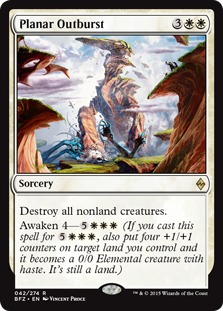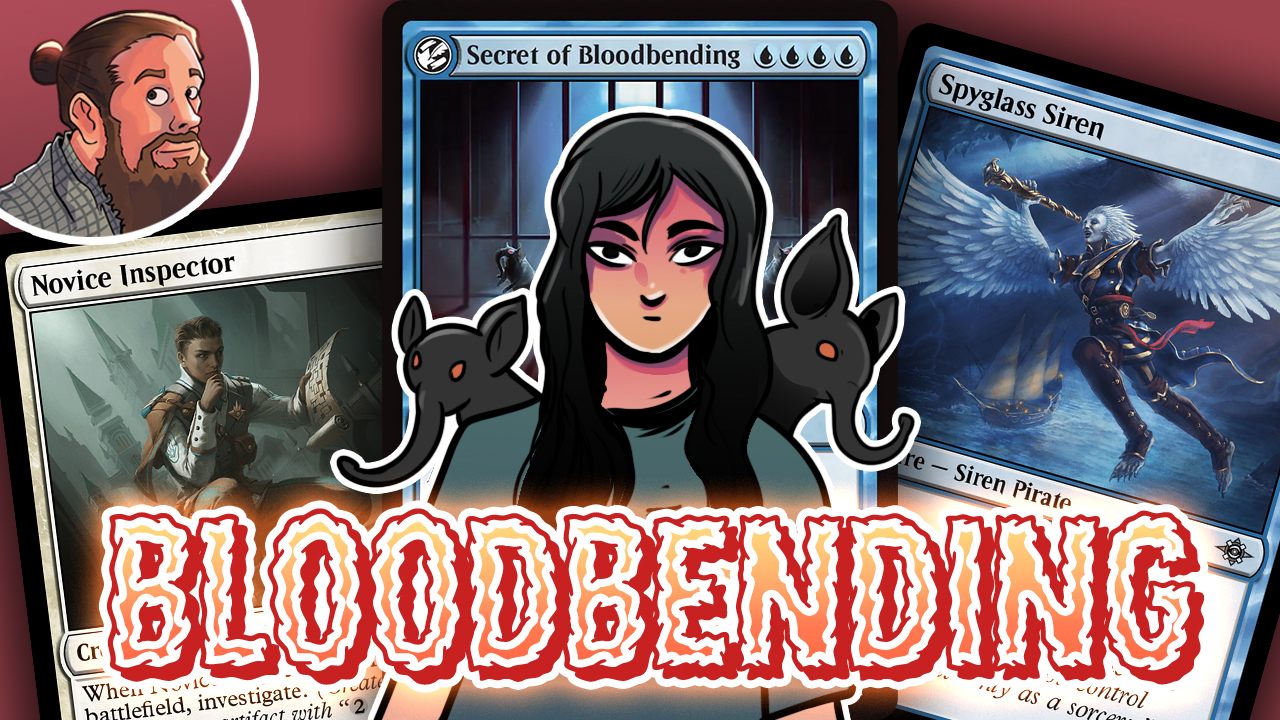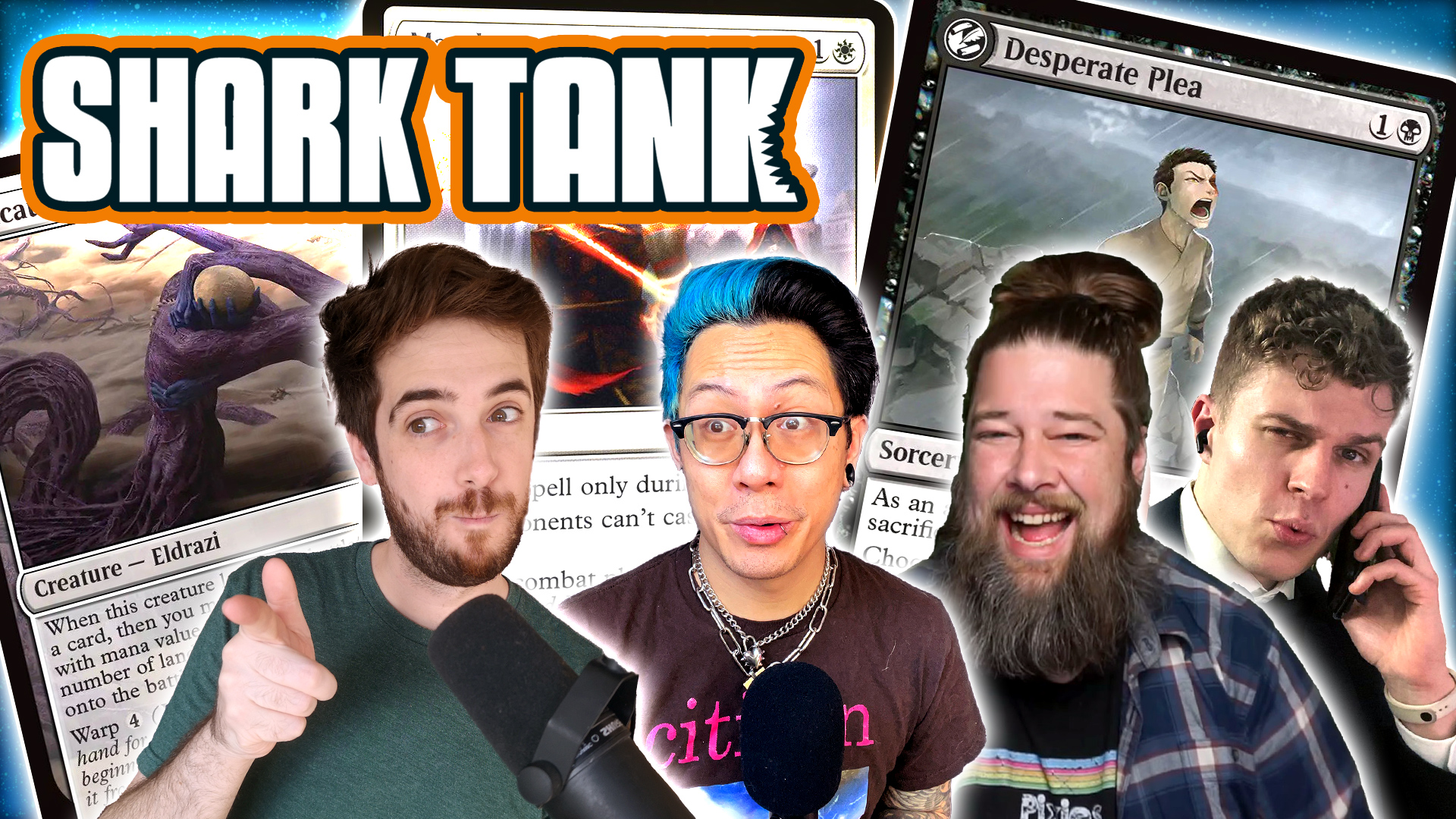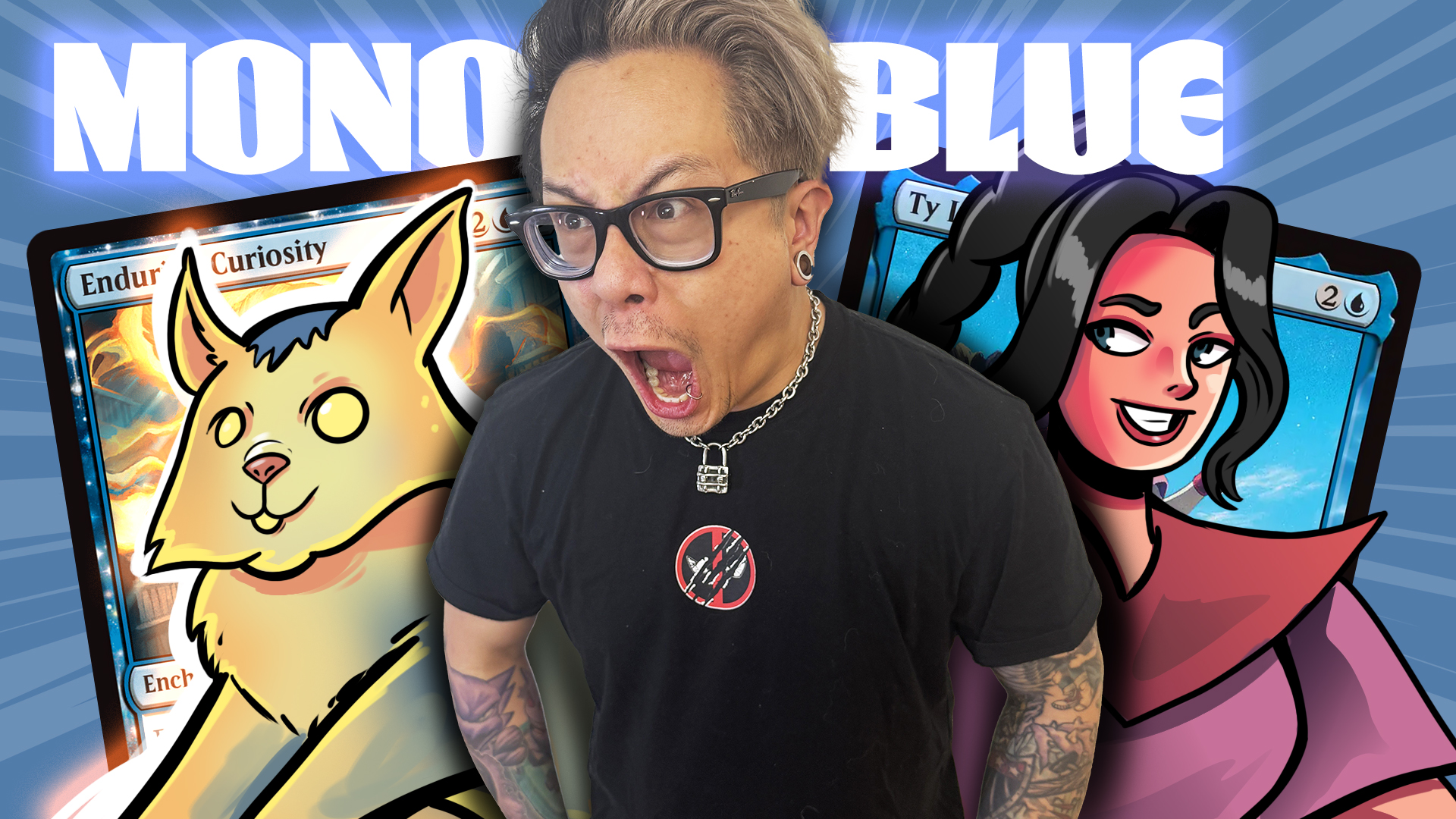Budget Magic: $85 (35 tix) Standard Energy Fog
Kaixo, Budget Magic lovers! It's that time again. This week, while I was browsing through the cards in Kaladesh Standard, I stumbled across the fact that Wizards put three different Fog effects in the format in Repel the Abominable, Commencement of Festivities, and Encircling Fissure. Of course, having a critical mass of Fogs in Standard means one thing to me: it's time to build Turbo Fog! If you're not familiar with the archetype, it's one of my favorite ways to torture opponents. You draw a bunch of cards, keep your opponents from ever dealing you damage by casting a Fog every turn, and win the game eventually, somehow. That said, we aren't playing straightforward Turbo Fog; instead, we have a bit of a Kaladeshian twist thanks to one of the set's hallmark mechanics: energy. Playing a handful of energy cards gives us a ton of flexibility to deal with cards that would otherwise be problematic for a Turbo Fog deck (namely, planeswalkers). As a result, this week, we are heading to Kaladesh Standard to play a deck I'm calling Energy Fog!
We'll talk more about Energy Fog after the videos, but first a quick reminder: if you enjoy the Budget Magic series and the other video content on MTGGoldfish, make sure to subscribe to the MTGGoldfish YouTube Channel to keep up on all of the latest and greatest.
Energy Fog: Deck Tech
Energy Fog vs. Grixis Midrange
Energy Fog vs. Mono-White Humans
Energy Fog vs. UR Spells
Energy Fog vs. Esper Control
Energy Fog vs. WB Fabricate

The Deck
The basic idea of Energy Fog is fairly simple. We play a ton of Fogs and a bunch of card draw, and hope that once our opponent gets a board full of creatures, we draw enough Fogs to keep our opponent from ever dealing us damage; then, we win the game with Fevered Visions, Fateful Showdown, and Dynavolt Tower. While this might sound easy, the main challenges of the deck are figuring out the right answers for our opponent's threats and determining when we should be trying to kill our opponent and when we can afford to take damage.
The Fogs



As I mentioned in the intro, the reason Energy Fog can exist is that we have three different Fog effects available in Standard, which is about the minimum number needed to have a realistic shot of casting one every turn in the mid and late game. Commencement of Festivities and Encircling Fissure are just Fogs in our deck, preventing all combat damage our opponent would deal to us for one turn. This means that they aren't especially helpful against direct damage (or any other type of non-combat damage), but in most matchups, this doesn't really matter because most of the burn spells in the format (like Harnessed Lightning) only target creatures, and even if a deck has a few copies of Fiery Temper, they usually don't have enough real burn to actually kill us.
Repel the Abominable has the highest ceiling and also the lowest floor of all of our Fogs. The upside is that it prevents all damage, which includes Fiery Temper, Dynavolt Tower, and any other form of damage. On the other hand, the downside is that it only prevents damage from non-Human sources, so we occasionally run into situations where it does nothing (for example, against white-based Human decks) or does less than we'd like (for instance, not preventing the damage from Voltaic Brawler against GR Energy). It's also important to realize that it prevents damage for both players, which means that our Fevered Visions won't hurt our opponent for a turn and that we need to make sure we don't impulsively fire off a Dynavolt Tower activation or cast a Fateful Showdown in the same turn we resolve a Repel the Abominable.

While Wildest Dreams can get back anything from our graveyard (and often multiple anythings), most of the time it's just more Fogs. Since our deck draws a lot of cards, we'll hopefully hit our land drops every turn; then, in the late game, we can cast Wildest Dreams to return two, three, or even four Fogs from our graveyard to our hand, which gives us several more turns of Fogging to close out the game.

Fumigate is oddly synergistic with our Fogging plan, since a lot of opponents keep committing creatures to the battlefield as we resolve Fog after Fog. Eventually, we will draw into our copy of Fumigate, which not only allows us to sweep away all our opponent's creatures but also gains us a big chunk of life, which means that even if our opponent has some amount of direct damage, it should be hard for them to kill us with it. Most importantly, Fumigate often works as a double Fog. As we talked about before, once our opponent's board gets filled up, we are usually in a position where just one attack step without a Fog would be lethal. By resetting the battlefield, Fumigate often allows us to go one turn without casting a Fog, which means we can spend our mana on card draw, Wildest Dreams, and other non-Fog plays to help set us up for the rest of the game.
Finishing the Game


Fevered Visions is pretty much the perfect Turbo Fog card. It keeps us drawing cards, which helps us find more Fogs to stay alive while also slowly killing our opponent in a lot of matchups. Against anything that is midrange or controlling, Fevered Visions is easily the best card in our deck because it's very difficult for the opponent to keep below four cards in hand, which means Fevered Visions is damaging them turn after turn. In these matchups, Fevered Visions also does a great job of keeping planeswalkers in check, since we can redirect the damage to remove some loyalty counters. It's also the reason why our deck has a reasonable matchup against control, even though our Fogs are pretty much dead cards in these matchups.
Fateful Showdown might look strange, but it's actually amazing in our deck because it does two important things. First and most importantly, it gives us a way to deal huge chunks of damage to our opponent. Most of the time, when we cast a Fateful Showdown, we have a Fevered Visions or two on the battlefield, keeping our hand full of cards, so when we cast a Fateful Showdown, we are dealing seven, eight, or nine damage. Since Fateful Showdown is instant speed, if we have two copies in hand, we can cast the second one in response to the first one to potentially kill our opponent in one big turn (we often do this during our end of turn phase, before we discard to hand size to maximize the number of cards in hand for Fateful Showdown). If we only have one copy of Fateful Showdown in hand, the second part of Fateful Showdown (discard our hand and draw that many cards) can often find us another copy to keep the damage chain going. This second ability is the other important upside of Fateful Showdown. Sometimes, we simply cast it to improve our hand and go digging for more Fogs while we are waiting to set up our end game.
Other Stuff


Prophetic Prism is a necessary evil in our deck because our mana costs are pretty absurd (we have green spells, blue spells, double-white spells, and double-red spells). It doesn't do much, essentially turning one of our lands into a painless City of Brass until end of turn, but it also doesn't cost much, since it draws us a card when it enters the battlefield. Thankfully, when combined with Aether Hub and Evolving Wilds, it means that we rarely have troubling casting our stuff on time, even with our intense mana costs.
Meanwhile, Glimmer of Genius is key to helping us cycle through our deck to find more Fogs. While it only actually draw us two cards, the fact that we get to scry two means that we get to see four different cards, which is almost (but not quite) enough to make it "pay four mana, draw a Fog and another card." When it isn't finding us Fog, it offers a great way to dig through our deck to find Fevered Visions, Fateful Showdown and our other finishers.
Story Time
The above deck was actually my first attempt at Turbo Fog in Kaladesh Standard, along with a few more random card-draw spells, a copy of Jace, Unraveler of Secrets, and a couple of Negates. I played a few games with the deck and was reasonably successful, but there were a couple of problems. First was Smuggler's Copter. Even though we could keep it from damaging us with our Fogs, because it triggers when it attacks, it still allows the opponent to loot every turn, eventually drawing them into counterspells or planeswalkers that could disrupt our plan.
The second major problem was planeswalkers. Against control decks, planeswalkers aren't that scary because our opponent usually has enough cards in hand that we can shoot them down with Fevered Visions, but I started running into aggressive decks that were using planeswalkers (often out of the sideboard) as the top end of their curve, which was a major problem. When an opponent goes one-drop, two-drop, three-drop, Chandra, Torch of Defiance into Nissa, Vital Force, no number of Fogs or Fevered Visions is going to save us. After losing a couple of times to these problematic cards, I went in search of an answer, which is how Turbo Fog turned into Energy Fog.
Energy Fog


There's one card in Standard that is very good at stopping both Smuggler's Copter and planeswalkers, and that card is Deadlock Trap. So, I quickly landed on the artifact as a potential solution to the issues I was having with Turbo Fog. But, using Deadlock Trap presented another issue: how do we produce enough energy to keep it locked? More aggressive decks can get away with using Deadlock Trap as a temporary answer, but our deck takes a long time to win, so using Deadlock Trap to stop a planeswalker for a turn or two simply wouldn't get good enough. What we needed was a way to make enough energy so that we could use Deadlock Trap every single turn of the game.
As backwards as it sounds, producing energy whenever we cast a Fog or Glimmer of Genius was the original reason I put Dynavolt Tower in the deck. The plan wasn't so much for it to be a way to kill the opponent (although I obviously knew that was an upside) but to be a massive energy producer to turn Deadlock Trap into a hard lock for Vehicles and planeswalkers. As I started playing with the deck, it became clear that Dynavolt Tower was doing its job of producing energy too well, and we often have so much energy that we'd just use it to kill our opponent in conjunction with Fevered Visions and Fateful Showdown. While we still put some energy into Deadlock Trap, Dynavolt Tower became a central part of the deck, giving us a plethora of must-deal-with three-drops and putting a ton of pressure on the opponent. And thus, Energy Fog was born!
Sideboarding




Sideboarding is pretty simple, but I wanted to make sure to talk about it a bit because it's very important. Against control, our Fogs are pretty close to dead cards (which is okay in game one, since all of our opponent's removal is also dead and we have the single best card in the matchup in Fevered Visions). However, in game two, we really need to remove as many Fog effects as possible, so we typically bring in all six counterspells along with Quarantine Field and remove eight Fogs. This leaves three Fogs in our deck (normally Repel the Abominable, since it can prevent random, non-creature damage), which isn't ideal, but considering we draw a ton of cards and can eventually discard them to Fateful Showdown, it usually works just fine.



Meanwhile, against aggressive decks (especially those without a lot of planeswalkers), we can take out our Deadlock Traps and bring in more wraths, which are extremely helpful, since they often work as double Fogs, allowing us a turn where we don't need to cast a Fog while our opponent is rebuilding their board.
Ultra-Budget Energy Fog

The ultra-budget version of Energy Fog cuts from the only place it can: the mana base. Apart from switching around the lands (and cutting Harnessed Lightning from the sideboard), the ultra-budget list is exactly the same as the version we played in the videos. The biggest issue here is that a lot more lands will be coming into play untapped, which can lead to some tough situations (for example, in the mid-game, we often want turns where we can cast a Fog and also Glimmer of Genius to find another Fog for the following turn, and this will happen far less consistently with the ultra-budget mana base), but all in all, it shouldn't change the way the deck plays any meaningful amount. If you decide to start with this version, the more untapped lands you can find to put in the deck, the better, and Aether Hub in particular is helpful because it taps for any color and also fuels our Dynavolt Towers and Deadlock Traps.
Non-Budget Energy Fog

The non-budget build of Energy Fog is basically the opposite of the ultra-budget build, getting a significant upgrade to the mana base with more untapped lands and more creaturelands. Otherwise, there isn't a lot to change in the main deck because the fogs and finishers are pretty well set in stone and necessary for the deck to function properly. However, we do get some interesting sideboard options in Archangel Avacyn (good at pressuring opposing planeswalkers at instant speed), Jace, Unraveler of Secrets (for more card drawing), Sphinx of the Final Word (as an alternate finisher against control), and Chandra, Torch of Defiance (whose ultimate is fairly unbeatable if we can protect her for a few turns with our Fogs). Is the non-budget build better? I think a bit, but the difference isn't that significant. If you have any of the good sideboard options (or better lands) sitting around, throw them in the deck, but I wouldn't go out and buy them just to improve Energy Fog.
Conclusion
Anyway, that's all for today! We went 4-1 in our video matches and 6-2 overall (not featured: a win and a loss against Shota's Grixis Control list and a win over a Jeskai Control list trying to win by exiling Hedron Alignment with Nahiri, the Harbinger). Apart from the one game where we ran into WB Fabricate (which could kill us with Zulaport Cutthroat and Marionette Master), the deck actually felt very good against our current Standard format. The Fog plan is often enough to beat more aggressive decks, and the combination of Fevered Visions and Dynavolt Tower is devastating against control decks, which means we have most of the format covered. Probably the biggest reason the deck feels very good right now is that Fogs are super effective because there are very few decks that can win with direct damage. As a result, after we get planeswalkers locked down with Deadlock Trap, there really isn't a lot that most decks can do to get through an endless stream of Fogs. Most importantly, the deck is super fun to play and attacks the format on a different level than every other deck in Standard! Give it a shot; I don't think you'll be disappointed.
As always, leave your thoughts, ideas, opinions, and suggestions in the comments, and you can reach me on Twitter @SaffronOlive or at SaffronOlive@MTGGoldfish.com.













